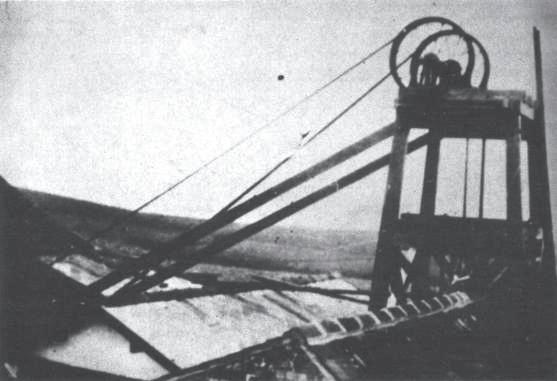
Grimebridge Shaft
Sunk in 1851 was 96 feet deep
Grimebridge Shaft was sunk in 1851 and a surface drift at a gradient of 1 in 5, was also driven into the Lower Mountain mine, which was 2′ 10″ thick with a black shale roof and a fireclay floor.
From the pit bottom, developments were set off to the south-west, or straight forward from the entrance to the three man cage. This road eventually cut the fault which separated Grimebridge from Fox Hill Colliery and acted as a connection to Stacksteads Colliery. To the right of the pit bottom were the lower side districts which were among the first to be worked. These headed towards the abandoned Dean Pit.
Grimebridge soon became George Hargreaves and Co’s largest colliery in Rossendale. The shaft wound over 1000 tubs per day, one at a time, and their coal along with that coming up the drift, was transported over the moors to the old Fox Hill Colliery by endless chain. At Fox Hill there was a turn and the tubs were transferred onto a self-acting incline which transported them to Whitewell Bottom staith.
Under the National Coal Board there was an average of 52 men underground and 15 on the surface. The remoteness of Grime Bridge probably made it difficult to modernise coal getting and it closed in November 1963.
Further reading:
- Seal, C.S. 1997 “Grimebridge, Oldest Pit in Lancashire”British Mining No.59, NMRS, pp.128-135
Return to previous page

